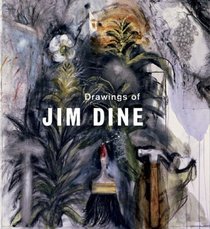Search -
Drawings of Jim Dine
Drawings of Jim Dine
Author:
Jim Dine is a consummate draftsman whose images of tools, large-scale nudes, self-portraits, and studies from nature and after antiquity are among the most accomplished and beautiful drawings of our time. This exhibition, the first major survey of Dine's drawings in 15 years, will feature over 100 of the finest examples from the 1970s to the pre... more »
Author:
Jim Dine is a consummate draftsman whose images of tools, large-scale nudes, self-portraits, and studies from nature and after antiquity are among the most accomplished and beautiful drawings of our time. This exhibition, the first major survey of Dine's drawings in 15 years, will feature over 100 of the finest examples from the 1970s to the pre... more »
ISBN-13: 9783882439991
ISBN-10: 3882439998
Publication Date: 4/2/2004
Pages: 192
Rating: ?
ISBN-10: 3882439998
Publication Date: 4/2/2004
Pages: 192
Rating: ?
0 stars, based on 0 rating
Publisher: Steidl Publishing
Book Type: Hardcover
Other Versions: Paperback
Members Wishing: 0
Reviews: Amazon | Write a Review
Book Type: Hardcover
Other Versions: Paperback
Members Wishing: 0
Reviews: Amazon | Write a Review
Genres:
- Arts & Photography >> Individual Artists >> ( D-F ) >> Dine, Jim
- Arts & Photography >> Individual Artists >> General
- Arts & Photography >> Graphic Design >> Drawing >> General
- Arts & Photography >> Art >> Museums & Collections >> Museums >> General
- Arts & Photography >> Art >> Instruction & Reference >> Drawing




